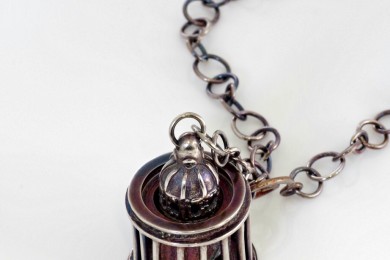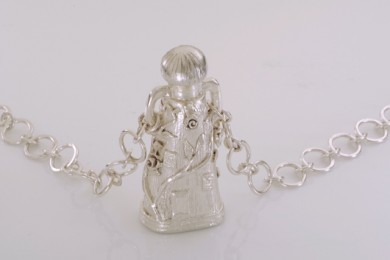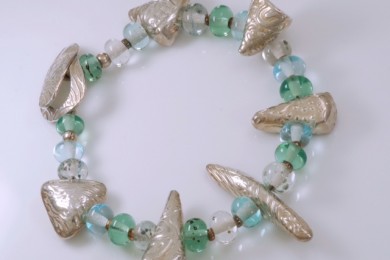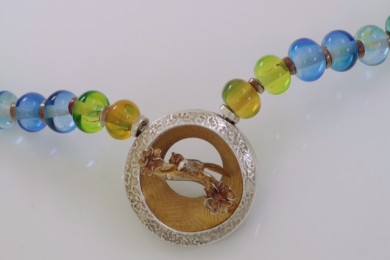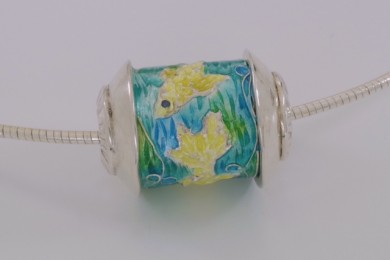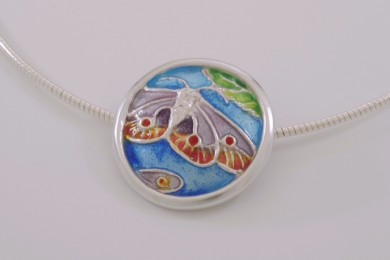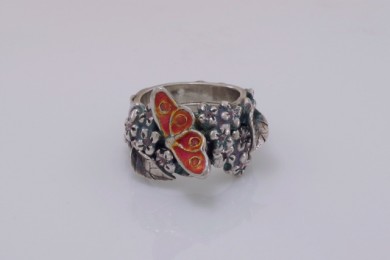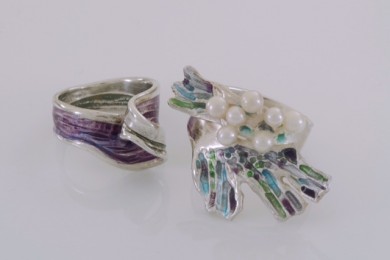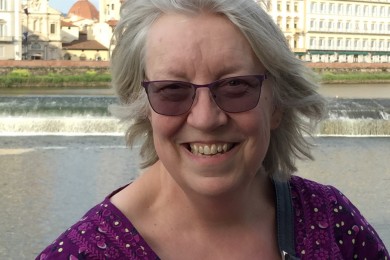Hi Lyn, thank you for the interview today. What brought you to metal clay?
Hi Mark,
Thank you so much for interviewing me, I'm honored to be asked.
It was really quite accidentally. I took an introductory class at a Guild of Enamellers conference, although I had originally booked to take a different class and swapped with a friend at the last minute. I was in the same class as Joy Funnell and we became great friends as we went through our certification (now diploma) courses together. Looking back, this introduction to metal clay had a massive impact upon my working life as it enabled me to construct much more complex forms than I would be able to do using tradition techniques in sheet and wire.
You have said before that landscape, architecture and history and recurring themes in your work. Can you explain how these things influence and inspire you? You also mentioned that the Roman period particularly inspires a lot of ideas for you.
Much of my early metal clay work was inspired by things found in the immediate landscape such as flowers, butterflies and moths. As my skills are developing I am able to include finer details and create more sculptural shapes. I have degrees in history and in interior design and for a number of years I taught the history of architecture at degree level. I used to photograph buildings to use in my teaching and continue to do so. I suppose it was inevitable that gradually some of my work has started to take the form of tiny pieces of architecture. I am particularly drawn to the Roman period and to the designs of the Italian Renaissance. The Romans were amazing engineers and innovators. They constructed huge and complex buildings but were also able to pipe water across the countryside and into cities; installed underfloor heating systems and their use of concrete to construct building such as the dome of the Pantheon is astonishing. Almost two thousand years after it was built the Pantheon still has the largest unreinforced concrete dome in the world and its geometry describes a perfect sphere. The detail in their designs is fascinating. Many Roman forms were the inspiration for architects of the renaissance and are still used in buildings today. Excuse me- I could talk about this forever! :)
You were awarded an Arts Council grant in 2003 to explore artistic themes working with enamel, and were an artist in residence at the Whitby museum in 2009 working on a collaborative project with other artists. As an artist, how much effort do you put into marketing yourself and getting these kinds of opportunities?
I was fortunate that when I first set up my business I was still in part time employment, so had a small but regular income. It enabled me to approach galleries and apply for projects quite slowly. I had lots of experience of dealing with the kind of formal language and paperwork necessary for applications for grants and projects. It is really important to understand what the gallery or funding body is looking for and to be able to express clearly how your ideas might fit. I still get nervous about that kind of competitive interview process as when I'm talking about my work as it always seems very personal.
Does your background as an enameller affect the way that you approach working with Art Clay silver or combining the two?
One of the best things about being self-employed is the freedom to explore my ideas and to experiment with different ways of making them. I have kept notebooks and sketchbooks for many years and occasionally dip back into old ones and find ideas that I am now able to make. When I first started enameling I used fine silver sheet; textured it through a rolling mill; enameled it and then had to create a bezel setting in order to turn it into jewelry. Using Art clay Silver I am able to create a varied textured surface; build up edges; create recesses perfect for enameling into and include a bail or findings as an integral part of the design. I love to create texture that is visible under transparent enamels. I think using enamels can give an extra dimension to my work but I also enjoy the fine textures that can be captured in Art Clay Silver and the possibility to combine it with copper.
How important is it these days to have some photography skills, and do you have any advice for those in need of improving their skills in this area?
Your question about the importance of photography is an interesting one. I think it has become much more important recently as most applications and marketing opportunities require really good sharp photography. The key points for jewelry photography are to have good lighting and some way of controlling the reflections. I spend time ensuring everything is clean and usually use a plain white background, either white foam core board or a sheet of acrylic. I took an online course to try and improve my close-up photography skills. Try and fix your camera (or phone camera) so that it is not hand held and use the time delay function as this will help with sharpness of focus.
Lastly, does living on the North Yorkshire moors help you get into your creative space?
I think I value the quiet reflection this place gives me. I am surrounded by beautiful landscape which is in itself inspiring but hope I will always want to create things wherever I live.
Thank you for this interview and I apologize for rambling! It has been interesting for me to reflect upon my metal clay adventure and I hope some of this will be useful.
The online photography course that I recommend is at www.photigy.com


